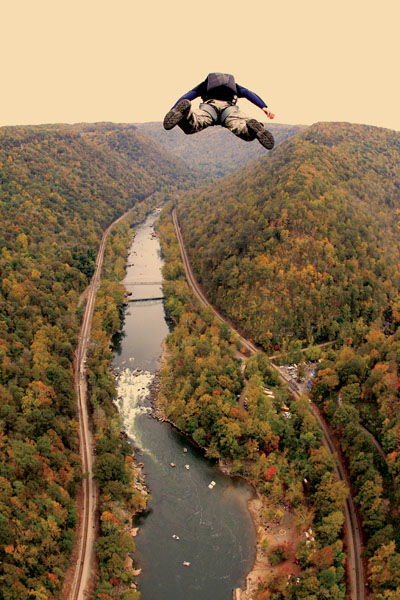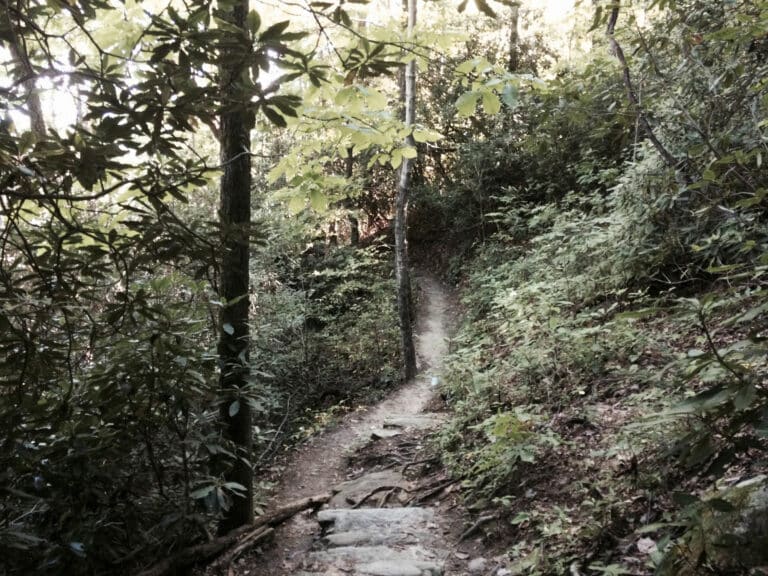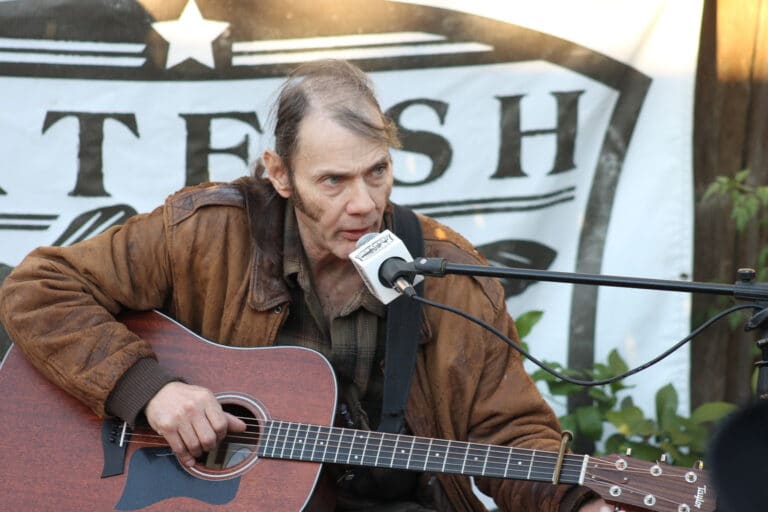It was a sunny day in front of Bollos Cafe, the front porch of Blacksburg, Va., and with reptile-like relief, we enjoyed the strong sun of a cold month. John Verbeck was trying to describe the feeling of flying to me. For a little over a year he’d been capturing that feeling a few moments at a time by BASE jumping.
“When you leave an exit point, nothing else matters,” he said. “For those few seconds, the only thing is this joy of the fall, and once the canopy opens, it’s just this magical—” Here he pauses, trying to find adequate words. “It’s like surfing airwaves.”
The world can weigh you down—with gravity, baggage, worries about the past and future. Whenever we feel anchored to possessions or controlled by ambitions, whenever out attention is trapped some place our passion is not, few things can match the liberation of flight.
It’s hard for people to see value in BASE jumping. BASE jumpers are labeled by most people as “thrill seekers” and “adrenaline junkies.” It’s an image that ridicules the artistry and discipline of BASE jumping. Non-BASE jumpers view the activity as falling, an out-of-control dance with death in which risk is keeping the rhythm. BASE jumpers view it as flying, a transcendent achievement reached through great effort.
“Never put yourself in a position where the only way out is to jump,” Verbeck advises. “Always be willing to say no.” That’s because BASE jumping isn’t about endangering yourself; it’s about choice.
The Freedom
If you’ve ever stood at the edge of a cliff or a balcony or a bridge, you’ve felt that there’s a barrier there. You look into the void and you think, “What would happen if I jumped?” There’s a limit that is not just physical, but also self-created. It’s the same barrier between imagination and action that keeps you from speaking up when you see injustice, or that keeps you in your seat when you have a goal or a dream, or that keeps you from saying hi to someone you’re attracted to. It’s something that keeps you in your place, for better or for worse. But we all have a voice that cries out against it. That is the voice I hear getting louder whenever I see someone dive off of a cliff, Verbeck says.
On the other side of that barrier there is always the unknown. BASE jumpers always refer to that space over the edge as the unknown, even though most exit points are well researched, rehearsed, and the action carefully visualized before a jump. Why call it the unknown?
Part of the reason is because of how fully invested a BASE jumper must be to enter that space. There is no way to probe in front of you and test things out. All of you is committed all at once by gravity. Body control in the air is very important. It’s one of the specialized skills BASE jumpers develop in the 100 skydives that are recommended before beginning to BASE jump. But that form of control is passive. Most of the jumper’s motion is controlled by the environment and natural forces. That makes BASE jumping a unique, receptive position to be in in relation to the environment. It’s a unique way to interact with a whole environment—not just its features but also the open space between the features.
The Rush
There is palpable joy and excitement around a jump site. It’s the joy of being alive and the excitement of being attentive to life. On a normal day, you may not notice the texture of stone, the calcium deposits popping up in tiny points, the heaviness of your body on your feet, or the taste of your saliva, but BASE jumping forces you to be awake, focused, and aware. Then, when you pull off something that few people in the world can do, there is the satisfaction of precision in the use of that awareness, moving from intention to action to control.
Safety
There’s a misconception that BASE jumpers are reckless: they’re not. A reckless BASE jumper would not last long. BASE jumpers are careful. They have a culture of safety between them sustained by mentors and conventional wisdoms that carry the strength of rules. But Marcus Ellison, seasoned BASE jumper and native of Oak Hill, W.Va., thinks we as a society could easily improve the standard by revising its outlaw status and working together instead. The ban on BASE jumping in national parks especially sets people up for dangerous conditions. Ellison would like to see the sport come further into the open.
“I am an advocate for legalization in national parks.” He says in an interview, “I do not want to hide; I shouldn’t have to. I pay my taxes; I served in the military; I’m employed and contribute to society in a positive way. I should be allowed to recreate in public lands that were intended for it.”
Ellison is also the BASE advisor to the Bridge Day Commission which organizes the annual celebration where BASE jumpers can openly launch from the iconic bridge and into the New River Gorge. The single-span bridge that runs more than 800 feet above the gorge is an ideal resource for BASE jumping. He believes that allowing access to the bridge more often would benefit the nearby town of Fayetteville as much as the sport. Even now, the local economy looks forward to the one day a year that the celebration brings people flocking to the gorge.
BASE jumpers have proven that they won’t be deterred by a ban. In spite of arrests in national parks, the parachutes continue to unfurl with loud rushes of air. Whether in the dark or in the daylight, hiding or in the open, people continue to open their wings. The real question is whether or not we will legitimize it.








